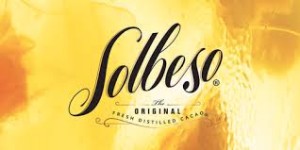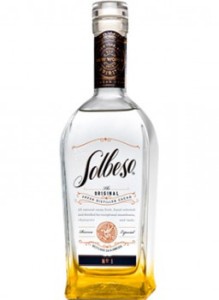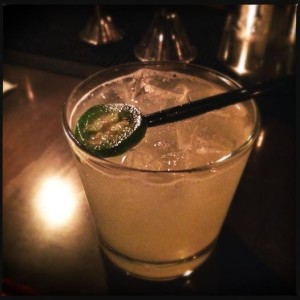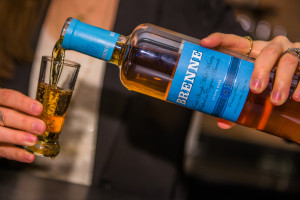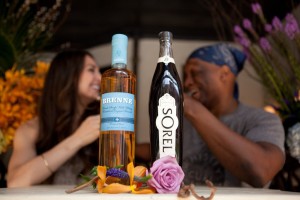“Alcohol cider sales booming across the U.S.…”
…Read the headline from a recent edition of the Chicago Tribune as reported by Mark Brown’s Buffalo Trace Industry Newsletter.
While the size of the cider market in the US is small relative to beer, the rate of growth has been nothing less than “explosive,” according to CSP Daily News, which monitors convenience store sales. Indeed it has. In the past 10 years, cider sales have grown 16%, and in the last five, 35%. Cider accounts for only 1% of the total beer sales but is expected to climb to 5% in a few years.
(See my previous post on cider two years ago.)
Why the growth?
I think there are a number of forces at work accounting for the willingness to try cider and add it to the drinking repertoire. These would include a taste that many perceive to be crisper and more satisfying than beer; product imagery that appeals to a wide and diverse demographic base; a replacement for ready-to-drink (RTD) products that are generally made from malt. But, more recently, there is another phenomenon at play – concerns about gluten. Yes, gluten.
Check out this chart. It’s from the CSP Daily News reporting on a study by RBC Capital Markets that correlates interest in “gluten free” (via Google searches) and the growth of cider. Not sure I buy that but there’s no question that gluten free has become an important purchase factor. In fact a recent NY Times article reported “… households reporting purchases of gluten-free food products to Nielsen hit 11 percent last year, rising from 5 percent in 2010.”
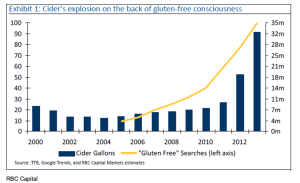
If you can’t fight ’em, join ’em
Two other interesting pieces of information came my way that suggests continued, if not accelerating, growth for cider.
First, the beer folks are coming on board. Angry Orchard Cider by Boston Beer is a major player as are the products from MillerCoors – Crispin, from ABI – Stella Cidre and from Heineken – Strongbow. The big beer players sat out the craft beer phenomenon and have been playing catch up, so I suppose they don’t want to make the same mistake with cider.
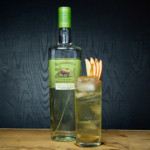
Second, I came across an interesting piece in Liquor.com that had some mouth-watering drinks with the delicious combination of ZU Bison Grass Vodka (Żubrówka) and hard apple cider. If you’re not familiar with Żubrówka, you ought to try it.
Will cider continue its growth? I certainly think so. But, at roughly an estimated 2 million hectoliters vs. beer’s 250 million, it has a long, long way to go.
“Surely the apple is the noblest of fruits.” — Henry David Thoreau, Wild Apples

